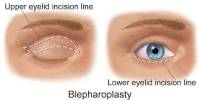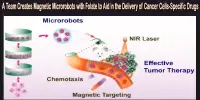Researchers have shown that chip-based sensing devices that are used to identify or evaluate chemicals have significantly improved. The accomplishments pave the way for highly sensitive portable integrated optofluidic sensing devices that could be used to run several different medical tests at once, even if they involve very different kinds of bioparticles, like DNA and viral particles, at greatly different concentrations.
As reported in Optica journal, researchers led by Holger Schmidt from the W.M. Keck Center for Nanoscale Optofluidics at the University of California, Santa Cruz (UCSC), applied new signal-processing techniques to an optofluidic chip-based biosensor.
With the aid of these developments, a mixture of nanobeads in concentrations spanning eight orders of magnitude, from attomolar to nanomolar, could be detected fluorescence in real time. By more than 10,000 times, this increases the concentration range where these sensors can function.
“This work is our latest step in developing integrated optofluidic sensing devices that are sensitive enough to detect single biomolecules and work over a very wide range of concentrations,” said Schmidt. “We have shown that this can be done with a single method, which allows us to simultaneously measure and distinguish multiple particle types at once even if they have very different concentrations.”
Creating a multipurpose testing device
Although many various chip-based testing apparatuses have been created, the majority of them concentrate on a single target or kind of test because biomolecules come in a wide variety of shapes and concentrations. For example, the concentrations of various proteins used as disease biomarkers can vary by over ten orders of magnitude.
Schmidt’s group, in collaboration with Aaron Hawkins at Brigham Young University, is working to develop a testing platform that could be used for multiple types of analyses. Optofluidic chips, which integrate optics with microfluidic channels on a silicon or plastic chip, are the foundation of this system. A laser beam is used to illuminate the particles, and a light-sensitive detector is used to measure the response from the particles.
This work is our latest step in developing integrated optofluidic sensing devices that are sensitive enough to detect single biomolecules and work over a very wide range of concentrations. We have shown that this can be done with a single method, which allows us to simultaneously measure and distinguish multiple particle types at once even if they have very different concentrations.
Holger Schmidt
The scientists have previously shown that their technology has the sensitivity required to carry out numerous types of investigations and can detect a wide range of particle types, including nucleic acids, proteins, viruses, bacteria, and cancer biomarkers.
To measure particles with high and low concentrations, they have so far used different detectors and signal analysis methods. This was important because signals from another particle type that is present at low quantities are overwhelmed if one particle type is present at very high concentrations.
Better signal processing
In the new work, Schmidt and graduate student Vahid Ganjalizadeh developed signal processing methods that can be used to detect particles in both high and low concentrations simultaneously, even if the concentrations are not known in advance.
To do this, they combined different signal modulation frequencies: Low frequency laser modulation can detect large signals from numerous particles simultaneously at high concentrations, while high frequency laser modulation can distinguish between single particles at low concentrations.
“Secondly, we implemented a feedback loop that detects when signals are really large and adjusts the input laser power accordingly,” said Schmidt. “In this way, we can detect large signals from high concentrations without overwhelming the weak signals that may be present from another species at low concentrations. This allowed us to simultaneously detect particles that were present in very different concentrations.”
Additionally, the researchers used a lightning-fast algorithm they recently created to instantly recognize single particle signals at low concentrations. Additionally, machine learning assisted in the recognition of signal patterns, allowing for the very accurate differentiation of various particle types.
“These signal analysis advances are ideal for enabling device operation at the point of care where signal quality can be poor and where data analysis is required in real time,” said Schmidt.
Distinguishing low and high concentrations
By pumping optofluidic biosensor chips with a solution of nanobeads at varying concentrations and with distinct fluorescent hues, the researchers showed their unique signal analysis methodology. Even though the yellow-green and crimson bead concentrations in the combination differed by a factor of more than 10,000, they were still able to accurately identify them.
“While this work advances a specific integrated sensor that is based on optical fluorescence signals, the signal analysis technique can be used with any type of time-dependent signal that covers a wide concentration range,” said Schmidt. “This can include different optical signals but also electrical sensors.”
Medical device company Fluxus Inc. is currently commercializing the team’s optofluidic biosensing technology. The researchers are also working to adapt their methods to study molecular products from artificial neuronal cell tissue organoids.
This project, which is part of the UCSC Center for Live Cell Genomics, an NIH Center for Excellence in Genomic Science, could provide further insight into areas such as neurogenerative disease and pediatric cancer.
















